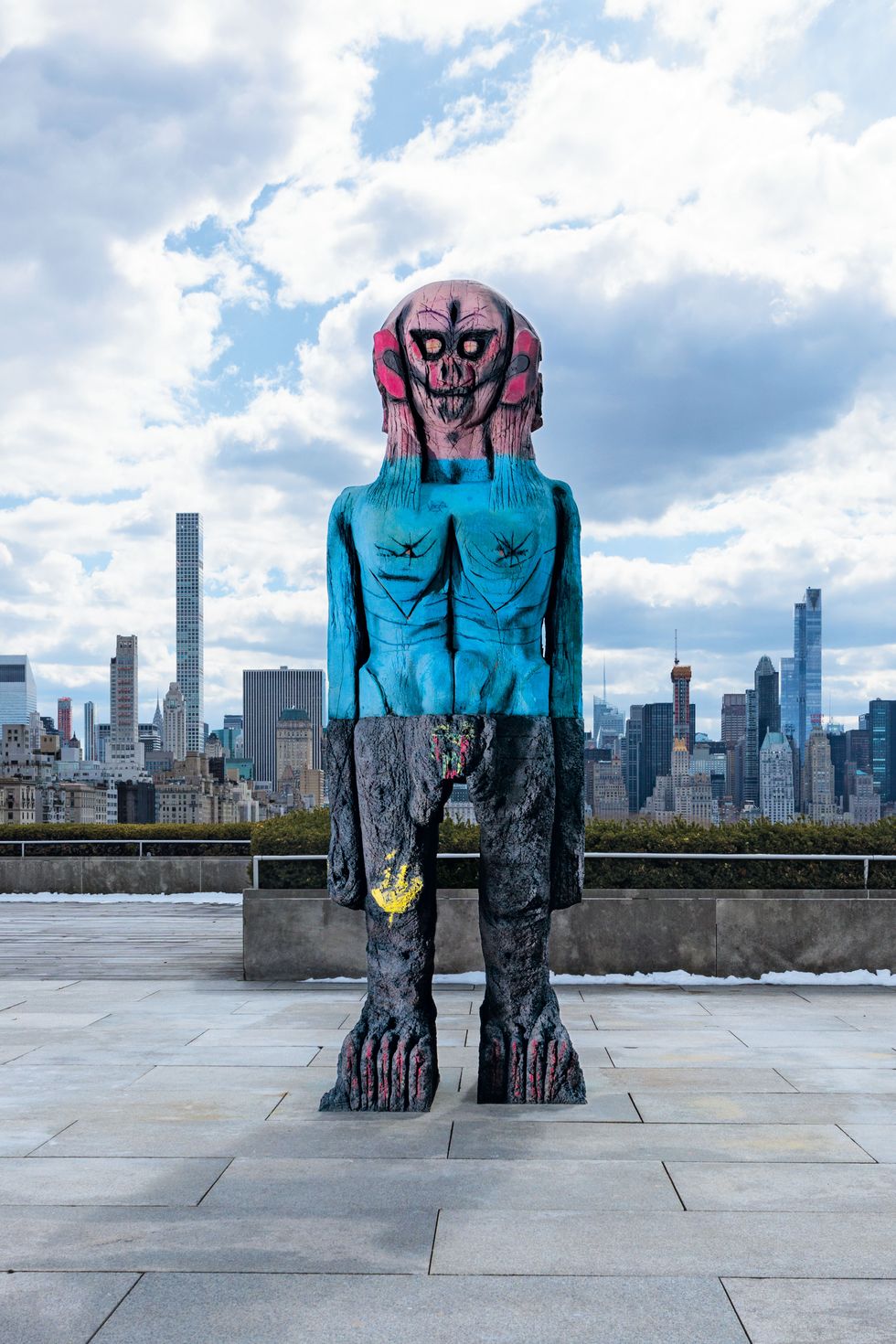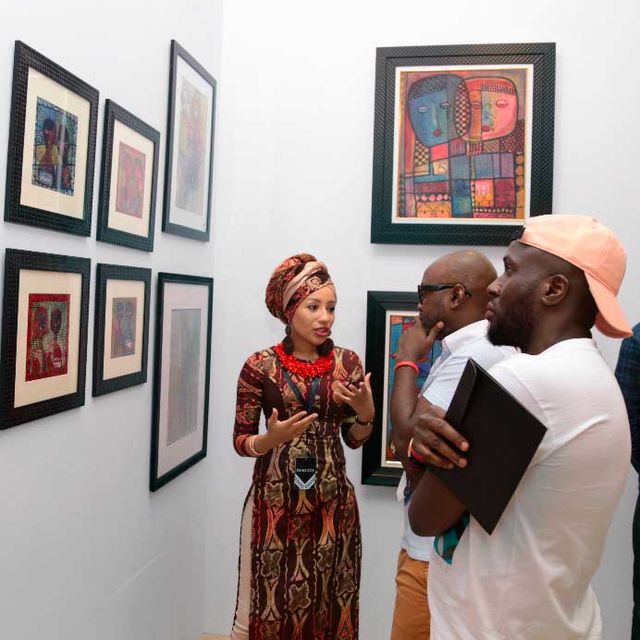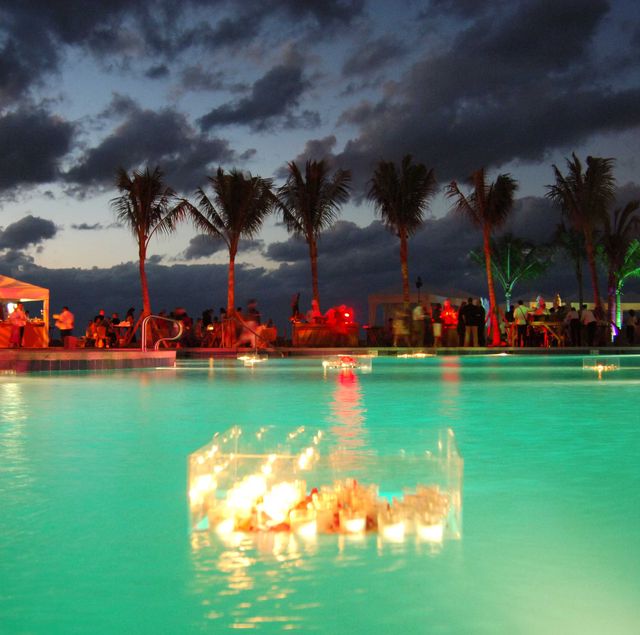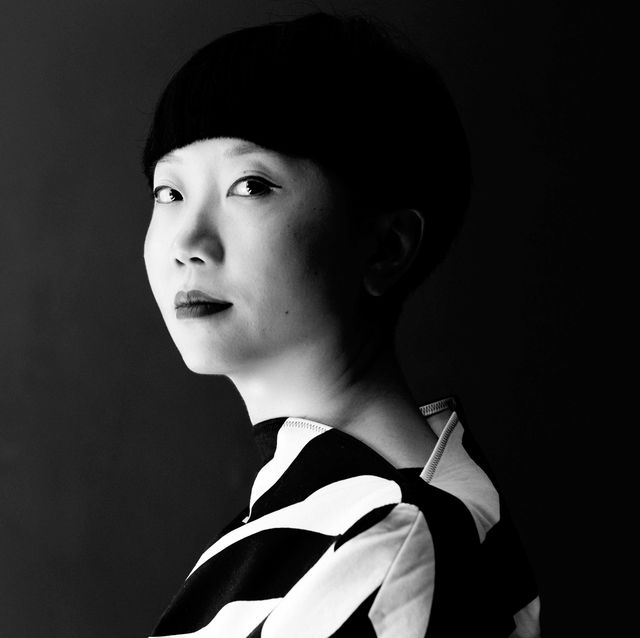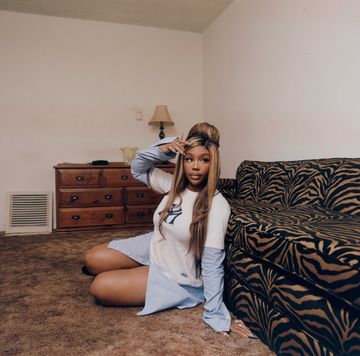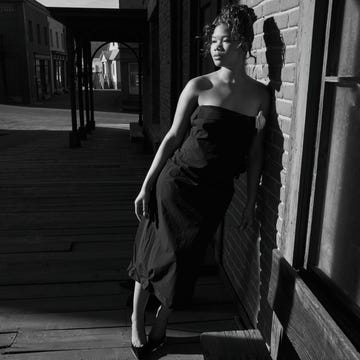The Photographer: Talia Chetrit
Talia Chetrit set up a darkroom in her family’s Washington, DC, home when she was just 13. At first, she often found herself thinking that if only her life were more interesting, her images would be better. A few years in, though, “I realized I could kind of make up anything,” she says, and she began not just taking candid photos of friends but staging, say, murder scenes. Since then, Chetrit, who now lives in New York’s Hudson Valley, has produced a wide-ranging body of work that includes nude self-portraits, aerial shots of New York streets, and a series of her having sex with her now husband.
A formal elegance characterizes her work, which often focuses on the interplay between illusion and truth. “She’s had consistent curiosities,” says Hannah Hoffman, whose eponymous L.A. gallery began representing Chetrit last spring. “Where does the power lie in an image? What is the relationship between photographer and subject?” Those same inquiries drove Chetrit’s decision to include some of her early photos of friends in her Amateur show at Rome’s Maxxi Museum in 2018. She was drawn to how those images captured a power dynamic that could no longer be achieved. “I wasn’t a 37-year-old photographing little girls,” Chetrit says. “I was also a little girl.”
Another unorthodox choice: incorporating into that same show a photograph she’d taken of a young girl for a Helmut Lang campaign that the brand nixed. “They decided that in this ‘Harvey Weinstein climate,’ they didn’t want to release pictures of her,” Chetrit says. “Which is a perfect example of #MeToo going wrong, because I’m a feminist artist, and we’re shaming this little girl for just acting like a little girl.” What Chetrit appreciates about the art world is that it offers her the opportunity “to be problematic as a way to address things that are problematic,” she says. “Otherwise there’s nowhere for that conversation.” As for the photos in which she appears, “You might know what socks I was wearing when I had sex that one time, but I don’t feel exposed,” she says. Those pieces, after all, are constructed just like the rest.
The Painter: Loie Hollowell
When Pace gallery opened its 75,000-square-foot flagship in Chelsea last September, the ground-floor exhibit space was dedicated to sculptural titan Alexander Calder, while the third floor featured new drawings by the influential British artist David Hockney. In between was Plumb Line, a show by painter Loie Hollowell, 36, one of the youngest artists on Pace’s roster. Just five years earlier, she was showing her paintings at artist-run galleries in Brooklyn and working as an art handler to pay the bills. But when it came time to decide whose work would be shown first in Pace’s new space, “We thought about who represents our future, and that’s Loie,” says Andria Hickey, the gallery’s senior director and curator.
Hollowell, sitting in her studio in Ridgewood, Queens, this past fall, a few feet from a plastic walker her toddler son sometimes uses to mosey around the space, sums up her response to learning she’d be featured in the inaugural shows as “Holy fuck.” (She gave birth nine months before the opening, and took just one month off before getting back to work.) Every piece sold before the show opened.
Hollowell learned how to paint from her father, a retired professor of art at University of California, Davis, and initially focused her efforts on self-portraits and desert landscapes composed of personal symbols. “I painted a lot of vaginal plants,” she says. But she began to shift toward more abstract forms after she had an abortion and wanted to make paintings about that experience.
Today, her work remains informed by Georgia O’Keeffe but also Italian Futurists, neotantric Indian painters, and transcendentalists. And while it engages broadly with what it means to inhabit a body, it’s always filtered through an expressly female lens. The nine pieces she hung at Pace, for example, convey different elements of her recent pregnancy and childbirth. The work also employs a mystical symbolism, and explores the relationship between depth, color, and dimensionality. What is difficult to perceive until you’re in their physical presence is that forms protrude from the canvases. What can also be missed is that the paintings have such presence, they practically hum. “I have a physical reaction when I’m around the work that makes me think about transcendence and a kind of ecstasy—the hairs on the back of my neck stand up,” Hickey says. “She’s trying to open a window to that space.
The Video/Installation Artist: Mika Rottenberg
Upon entering Mika Rottenberg’s solo show Easypieces at the New Museum last summer, visitors encountered an unsettling but mesmerizing sight: an air conditioner dripping water onto a potted plant. “After experiencing one of her works, both my physical and conceptual reactions to the world are completely changed,” says Margot Norton, the New Museum’s curator. “She draws attention to the perverse and bizarre qualities of so much of what we manipulate and consume.” (Easypieces has since traveled to MCA Chicago, where it’s on view through March.)
Born in Argentina, raised in Israel, and now based on Brooklyn, Rottenberg produces sculptures, installations, and videos that often employ the tactile aspects of the material world. They are always occupied with questions of commodification and labor—as the New Yorker review of Easypieces began, “Imagine Karl Marx as an ASMR star.” In a video titled Dough, from 2005–2006, uniformed women take turns kneading a yeasty mass and passing a rope of it between them via an assembly line. In Cheese, a video from 2008, women with immensely long hair milk goats, then start milking their own hair. (The piece was inspired by a hair growth tincture from the late 1800s—when Rottenberg came across it online, she thought, “That looks like my work!”)
Rottenberg’s newest video, Spaghetti Blockchain, features Tuvan throat singers in Siberia intercut with aerial shots of industrial farming and imagery that resembles melting glaciers. “I think a lot these days about the culture of extraction we’re producing, and if I even want to participate in it,” Rottenberg says. “Our environmental emergency can seem impossible to tackle. But I think if people understand it and create language around it, there’s some kind of power there.”
The Painter: Tschabalala Self
Since Tschabalala Self completed her MFA at the Yale School of Art in 2015, her career has progressed so rapidly she hasn’t even had time to relocate from New Haven. On her last day of class, she hopped a plane for Berlin, where her first solo show had recently opened. Since then, she’s been picked up by Thierry Goldberg gallery in New York and Pilar Corrias in London and has had six museum shows dedicated to her work; she has two more scheduled for 2020, one at the Baltimore Museum of Art and another at Institute of Contemporary Art Boston. Last year, she was also selected for the prestigious artist-in-residence program at the Studio Museum in Harlem, where she grew up.
Meanwhile, demand for her work has risen to frenzied levels; one piece recently sold at auction for about $476,000 (600 percent above the expected price). “I honestly don’t have much of an opinion about it,” she says of the sale. “I don’t make money from auctioned works. And since the work is all figuration that depicts the black body, it’s actually surreal that it’s at auction, and that no one sees irony in the whole spectacle of it. For me to have to contend with black bodies being auctioned in 2019—it is disheartening.
Self’s paintings center on her experience as a black woman in America, but they reference ideas that are universal. Some of her figures are composed of collaged fabric, a process she employs in part because it offers a material way to upend stereotypes—“A stereotype is a flat character with two dimensions,” she says. “I can confront those stereotypical images by making round, multidimensional [figures].” But her process also reflects the fact that all people comprise multiple selves. Ultimately, what Self is after is the truth. “A lot of times, especially when I’m making work about communities that are marginalized, people expect the work to be aspirational,” she says. “I’m more interested in how things are.”
The Sculptor: Huma Bhabha
In April of 2018, two roughhewn figures created by the artist Huma Bhabha appeared in the rooftop garden of New York’s Metropolitan Museum of Art. One was prostrate, head bowed, hands outstretched, much of its body obscured by what appeared to be black plastic. The other stood, towering over both the garden and the cityscape behind it, its four-faced head somewhere between alien and human.
We Come in Peace, the show’s title, refers to a 1990 movie in which a figure emerges from a spaceship and tells the assembled humans that the visitors mean no harm—only for the two sides to immediately begin trying to kill each other. But you didn’t need to know that to understand that Bhabha’s installation explored the connection between fear and violence, power and powerlessness, destruction and faith. “She will never tell you her politics in the work,” says Alissa Friedman, a partner at Salon 94, which has represented Bhabha since 2007. “But she is a political artist. At a recent Q&A, she was asked why she didn’t talk more about the plight of women. She said, ‘Well, I think those things are important. But to me the most important thing is war.’ ”
Raised in Karachi, Pakistan, Bhabha studied printmaking at the Rhode Island School of Design, then got her MFA in painting from Columbia University. It was only afterward, living in New York, that she began making sculptures. The first ones she produced, which were crafted out of pantyhose and other soft materials, then painted with enamel, were influenced by her curiosity about mutation and her love of sci-fi films: “There’s a certain paranoia in [those movies] that I can relate to,” Bhabha says. “I was interested in the visceral and the grotesque.” Today, she utilizes everything from wood to cork to dumpster-sourced Styrofoam to build her sculptures, which are then often cast in bronze. “I love the raw expressivity of her work,” Friedman says. “It is visceral and direct, almost like punk rock.”
Bhabha often describes the figures in her art as characters, and she returns to the same ones again and again. She initially produced a version of the prostrate figure in late 2001, partly in response to America’s post-9/11 invasion of Afghanistan, though at the time many viewers missed the subtext. “I don’t think people wanted to address issues like that, where it had to do with the killing of many people on the other side of the world,” she says. When her work appeared on the rooftop of the Met, though, the world was more receptive. “People picked up on it,” she says. Since then, Bhabha’s had her largest solo show to date, at the Institute of Contemporary Art Boston, and her exhibit The Company opened at Gagosian gallery in Rome last fall. “She’s always been an artist’s artist,” Eva Respini, the chief curator at ICA Boston, told the New York Times in March 2018. “But recently, she has come into her own.”
In 2002, Bhabha and her husband, the painter Jason Fox, moved to Poughkeepsie, New York—Bhabha initially found work in the area with a taxidermist. These days, she and Fox occupy a huge old firehouse, where, one rainy afternoon last October, Bhabha’s studio on the ground floor contained a few photographs she was in the process of painting on. Taped to the walls were pictures of wolves, a yellowed newspaper clipping showing gorillas fighting, and a photo of an iron maiden. (“I’d love to make something like that someday,” she said.) There were also some baby animal calendars, which she sometimes collages into her paintings—“I thought, ‘Why not bring out the corny side of me?’ ” she says—and a cutout from the cannabis-focused magazine High Times (she uses such images for collages, and besides, “I smoke a lot of weed,” she says with a shrug).
Only one sculpture was visible, a dark column with two yellow eyes peering out that stood in a small garden behind the building. It’s often said of Bhabha’s work that it looks like the remnants of a destroyed civilization, and it’s easy to imagine a future in which all of Poughkeepsie has been reclaimed by wilderness, with this piece the only thing left standing. “Her work is really about ruins, when you think about it,” Friedman says. “The ruins of humanity, the ruins of civilization. And she finds beauty in it.”
This article originally appeared in the January 2020 issue of ELLE.
Molly Langmuir is a freelance writer and former staff writer for ELLE.










